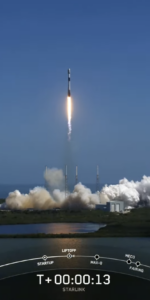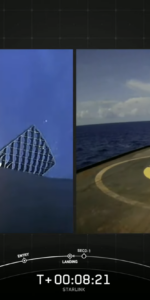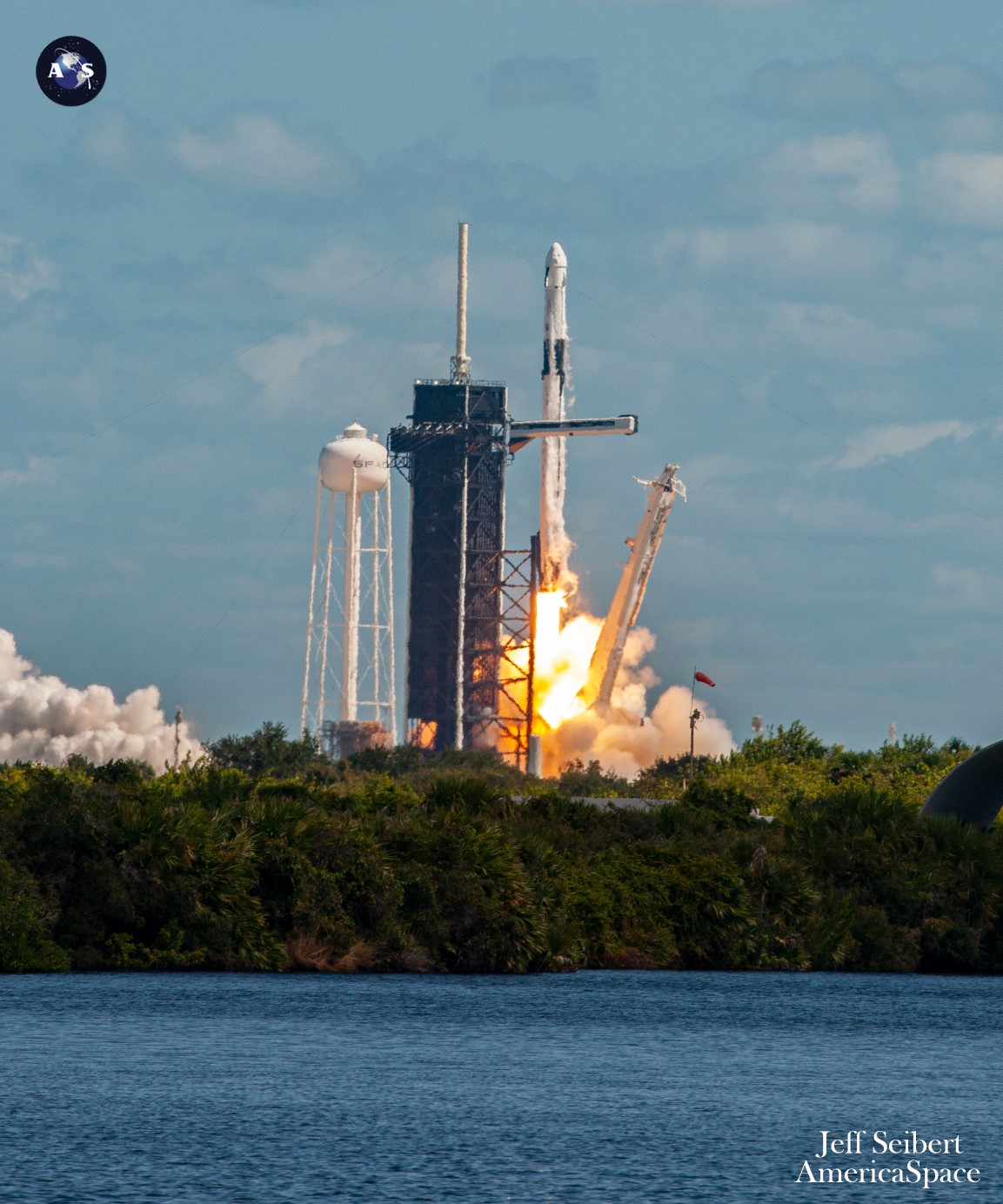
SpaceX is aiming for a record-breaking eighth Falcon 9 launch of the month later today, as a booster which first saw service last October to loft Dragon Endurance and Crew-5 to the International Space Station (ISS) prepares for her fourth flight. B1077 is set to rise from storied Space Launch Complex (SLC)-40 at Cape Canaveral Space Force Station, Fla., no sooner than 4:01 p.m. EDT Wednesday, laden with 56 Starlink internet communications satellites, bound for emplacement into low-Earth orbit.
Three T-0 points exist both on Wednesday and for Thursday’s backup opportunity. If the opening attempt at 4:01 p.m. EDT is missed, SpaceX will aim for 5:43 p.m. EDT or 7:22 p.m. EDT, but if Wednesday does not prove to be B1077’s day to shine, three more chances—at 3:36 p.m. EDT, 5:16 p.m. EDT and 6:57 p.m. EDT—are available on Thursday.
According to the 45th Weather Squadron at Patrick Space Force Base, weather conditions for Wednesday’s opening launch attempt are about 60-percent favorable, although an improvement to around 85 percent is anticipated on Thursday. Recovery conditions for the booster—which is tracking a landing on the Autonomous Spaceport Drone Ship (ASDS), “Just Read the Instructions”—are considered nominal.
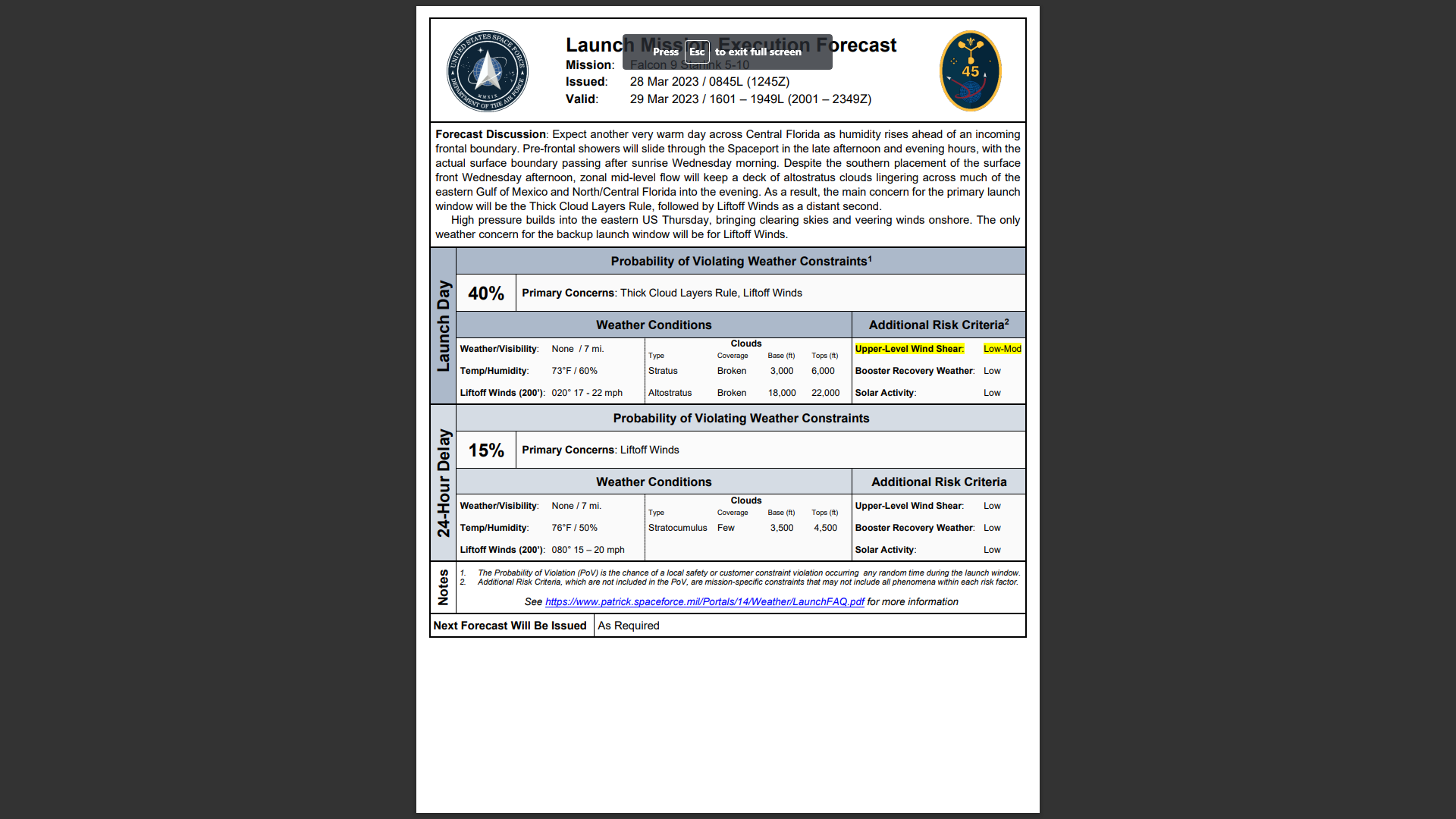
“Despite the southern placement of a surface front Wednesday afternoon, zonal mid-level flow will keep a deck of altostratus clouds lingering across much of the eastern Gulf of Mexico and North/Central Florida into the evening,” the 45th noted in its L-1 weather update, issued Tuesday. “As a result, the main concern for the primary launch window will be the Thick Cloud Layers Rule, followed by Liftoff Winds as a distant second.”
Tomorrow, however, is expected to be altogether more palatable day, with Liftoff Winds posing the only Probability of Violation (PoV). “High pressure builds into the Eastern U.S. Thursday,” the 45th added, “bringing clearing skies and veering winds onshore.”
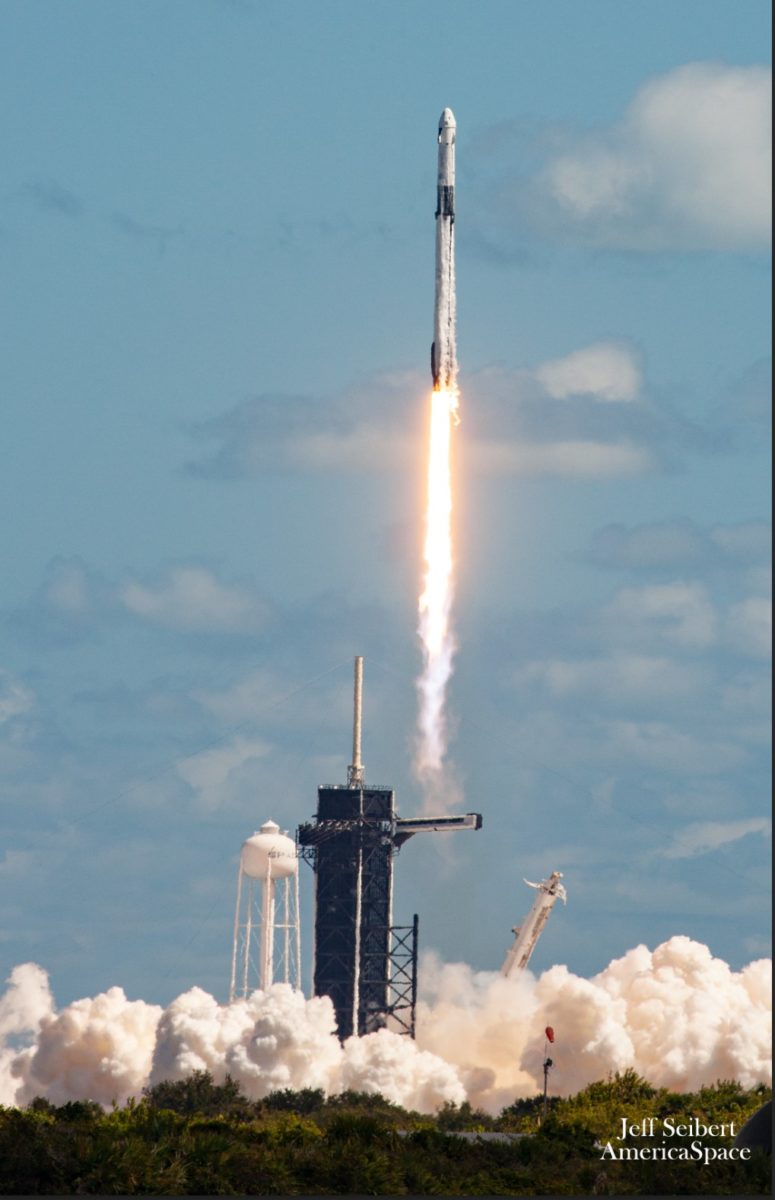
A successful launch later today will see B1077 log her third flight in the opening three months of 2023—having earlier lofted the sixth Block III Global Positioning System (GPS III-06) toward Medium Earth Orbit (MEO) for the U.S. Space Force in mid-January and the heavyweight Inmarsat-6 F2 geostationary telecommunications satellite in mid-February—in addition to her inaugural voyage last October with the Crew-5 quartet of NASA astronauts Nicole Mann and Josh Cassada, Japan’s Koichi Wakata and the first Russian cosmonaut to fly a Commercial Crew vehicle, Anna Kikina. They returned safely to Earth earlier in March, after spending more than five months aboard the ISS.
B1077’s three opening missions all concluded with impressive ASDS landings, with Wednesday’s scheduled fourth launch expected to be no different. The JRTI drone ship put to sea out of Port Canaveral last weekend, bound for a recovery position some 410 miles (660 kilometers) offshore in the Atlantic Ocean.
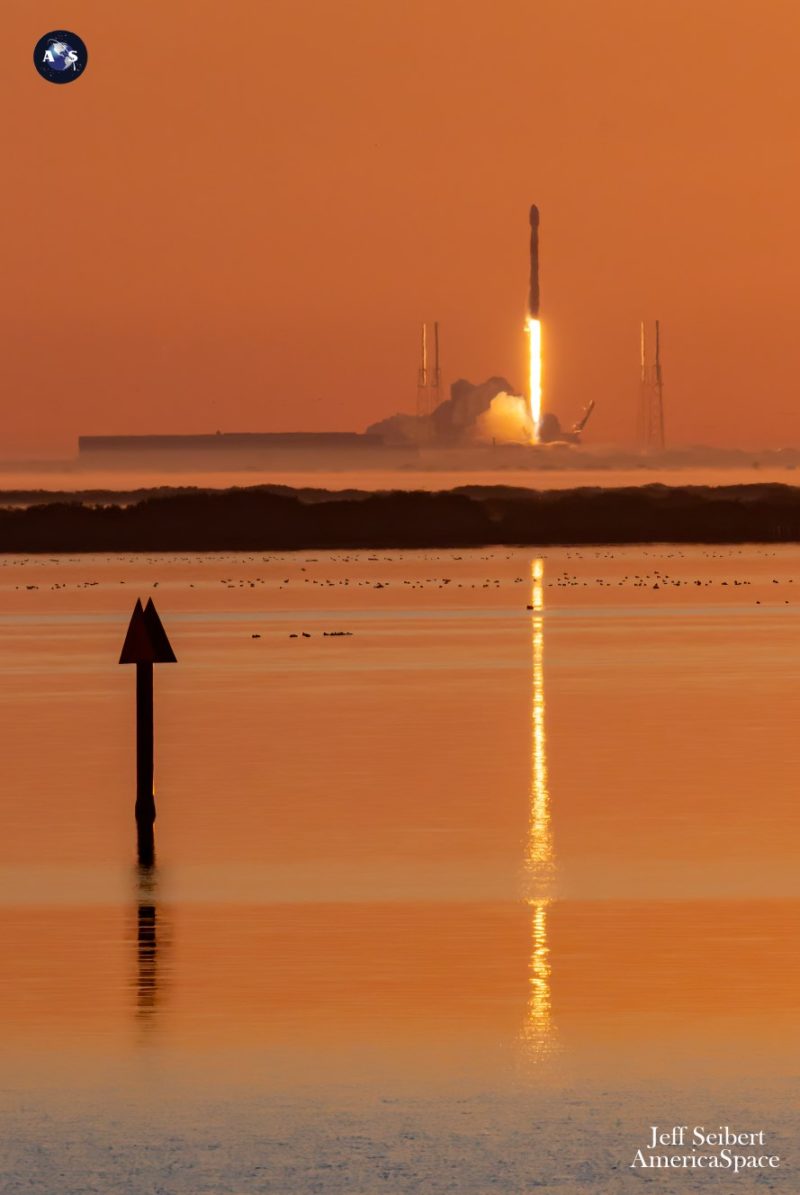
Assuming an on-time launch, B1077 will power the 230-foot-tall (70-meter) Falcon 9 uphill for the opening 2.5 minutes of flight, her nine Merlin 1D+ engines producing some 1.5 million pounds (680,000 kilograms) of thrust. The single Merlin 1D+ Vacuum engine of the second stage will then ignite for a customary six-minute “burn” to boost the 56-strong Starlink “stack” toward its scheduled deployment at 64 minutes after launch.
This is SpaceX’s 11th dedicated Starlink mission of 2023, bringing the total of these flat-packed internet communications satellites delivered to space this year to 552. And with the satisfactory completion of today’s launch, a grand total of 4,215 “production-design” Starlinks will have flown on 78 dedicated flights since May 2019.
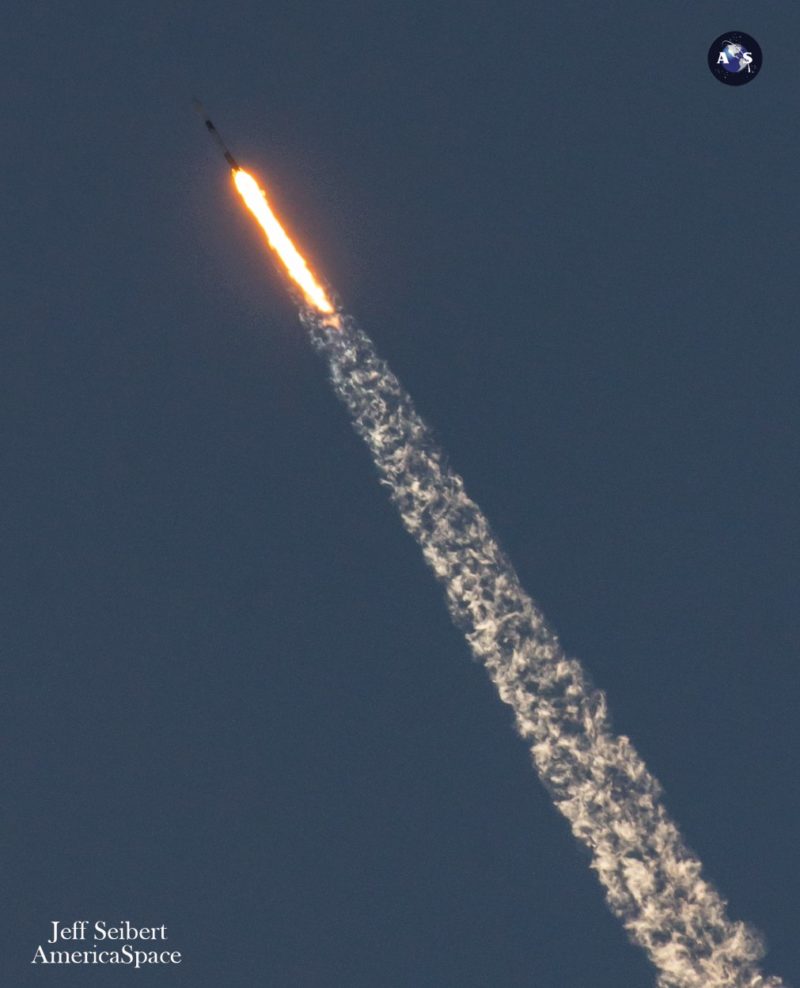
Starlink now facilitates high-speed and low-latency internet provision across more than 50 sovereign nations and international markets, spanning North and South America, Europe, Asia, Oceania and Africa. Last month alone, Iceland, the Philippines—Starlink’s first client in South East Asia—and Rwanda officially signed up to the network, with Haiti inking its participatory credentials in March.
And a successful launch later today will mark the first time that SpaceX has ever launched an eighth mission in the span of a single calendar month. That will add to an already burgeoning list of reusability and turnaround accomplishments set in 2023, with 20 missions achieved by only 12 Falcon 9s—including a pair of brand-new boosters—plus a single voyage by the giant Falcon Heavy in January.
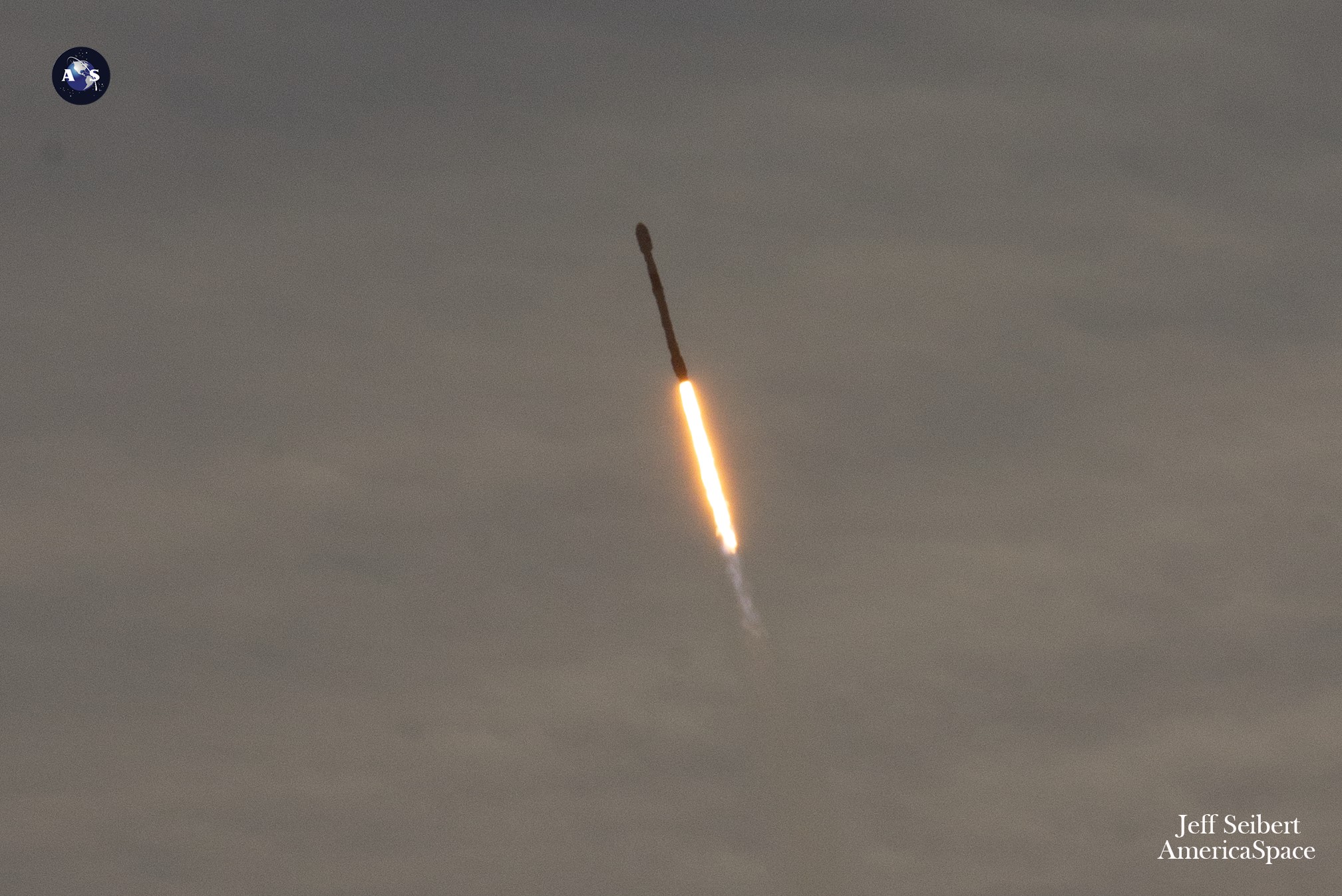
In addition to 496 Starlinks lofted to date, 2023 has seen SpaceX launch four geostationary-bound communications satellites, 80 broadband satellites for London, England-headquartered OneWeb, the Space Force’s USSF-67 and GPS III-06 and the Transporter-6 “rideshare” mission. Added to this list have been the CRS-27 Cargo Dragon, flying under the second-round Commercial Resupply Services contract with NASA, and the launch of Dragon Endeavour and her Crew-6 quartet of NASA astronauts Steve Bowen and Warren “Woody” Hoburg, Russia’s Andrei Fedyayev and Sultan Al-Neyadi of the United Arab Emirates (UAE), both of which launched earlier this month.
Just last week, SpaceX set a new record of only four hours and 12 minutes between a pair of Falcon 9 launches from the East and West Coasts of the United States. That neatly eclipsed the Hawthorne, Calif.-based organization’s previous personal best of a little more than seven hours, achieved between two missions last October.
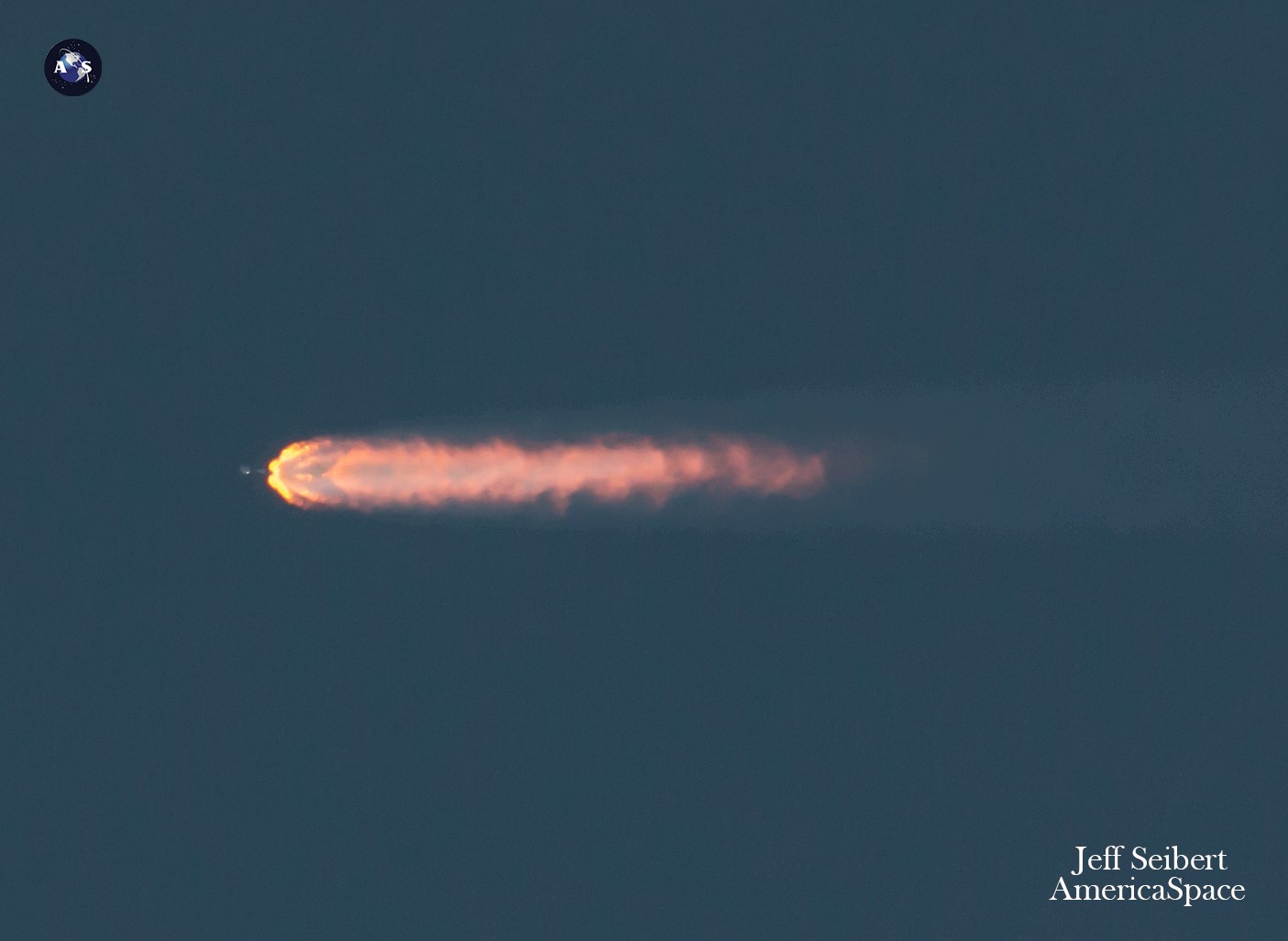
And if B1077 flies later today, she will cement March as the first calendar month in SpaceX history to feature as many as eight launches. Hopes of reaching this figure in January and February were thwarted by weather and technical issues, as well as delays associated with the high-priority Crew-6 mission.
Having flown its first successful Falcon 9 booster way back in June 2010, SpaceX achieved its first two-launch month in September 2014. It flew three times in a calendar month for the first time in June 2017, before advancing to four in November 2020, five in December 2021 and six and seven last April and December, respectively.
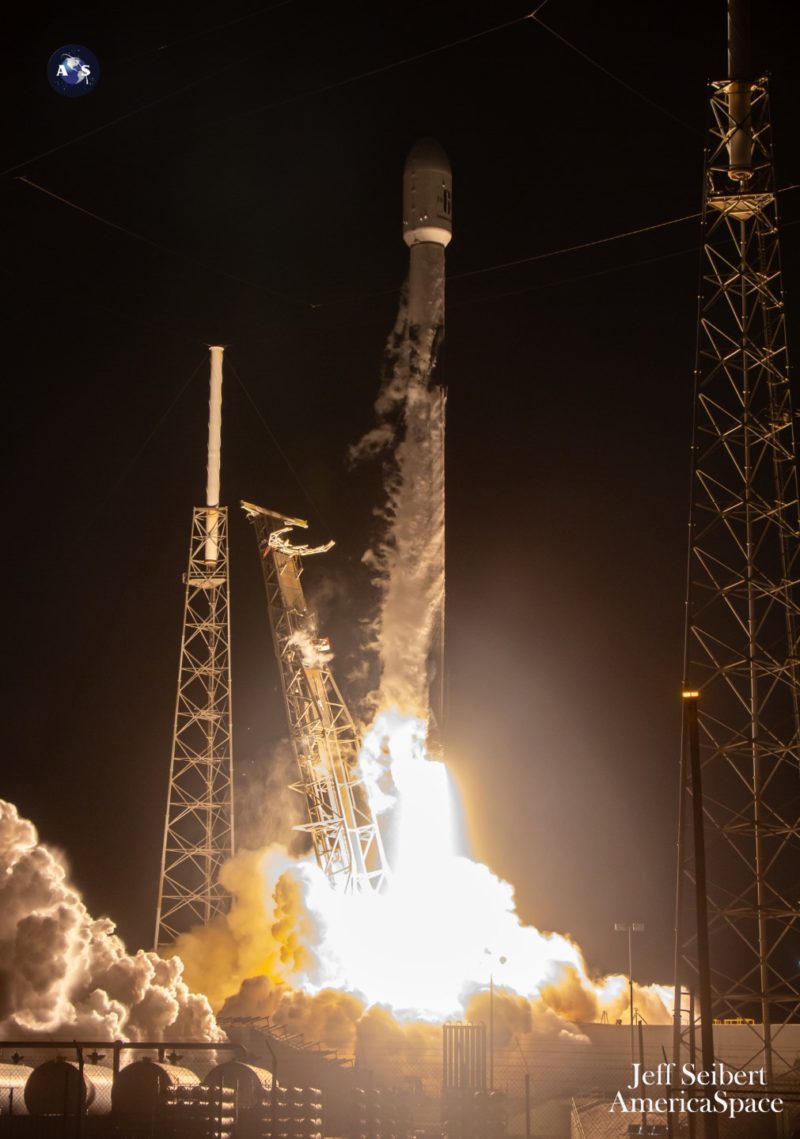
But a nine-launch March remains possible, with the opening launch of “Tranche 0” of the Transport and Tracking Layer for the Space Development Agency (SDA), perhaps as early as Thursday from Space Launch Complex (SLC)-4E at Vandenberg Space Force Base, Calif. Tranche 0 forms the basis of an eventual “constellation” of 300-500 low-orbiting experimental satellites to furnish ground-based warfighters with “assured, resilient, low-latency military data and connectivity worldwide” and Wide Field of View (WFOV) infrared sensors for infrared missile tracking. Contracts for Tranche 0 were signed with SpaceX in January 2021 for an estimated total value of $150.45 million.
If this mission does indeed fly tomorrow, it will close out 2023’s first quarter with 22 launches, a number which took SpaceX until the end of May to achieve last year. Extrapolating forward at this elevated launch tempo, it seems not unreasonable to anticipate 80 or more Falcon 9 missions before the New Year’s Eve bell next tolls.




